There have been many running efficiency products over the years, usually designed to analyze aspects of your running technique, and then ideally provide real-time (during run) or post-run feedback on how to improve. The form of these products varies, but are often somehow connected to your shoes. Insoles are popular, as are small pods. And most of them then connect to your phone. Some also your GPS watch.
To which, NURVV pretty much said: Yes, all of that please. Also…add GPS in too.
Their ultimate goal is to be a single cohesive platform from data collection (including insoles inside your shoes, and GPS attached to your shoes) to real-time coaching feedback via a smartphone app, to post-run analysis. And on a purely technical level – they do actually achieve that. Sure, I’ll quibble about the GPS accuracy and a few other usability aspects that could use some improvement. But on the whole – they’ve done *far* more than any previous product in this category.
The challenge though for NURVV is actually not technical or product. Rather, it’s alignment of market purpose to market users. But…we’re getting ahead of ourselves. First, let’s talk hardware.
Actually, first a quick note that NURVV sent over these media loaner units to test. Once I’m done here, they’ll get them shipped back to them. It’s how I roll. If you found this review useful, hit up the links at the end, or consider becoming a DCR Supporter which makes the site ad-free, while also getting access to a mostly weekly video series behind the scenes of the DCR Cave. And of course, it makes you awesome.
The Hardware:
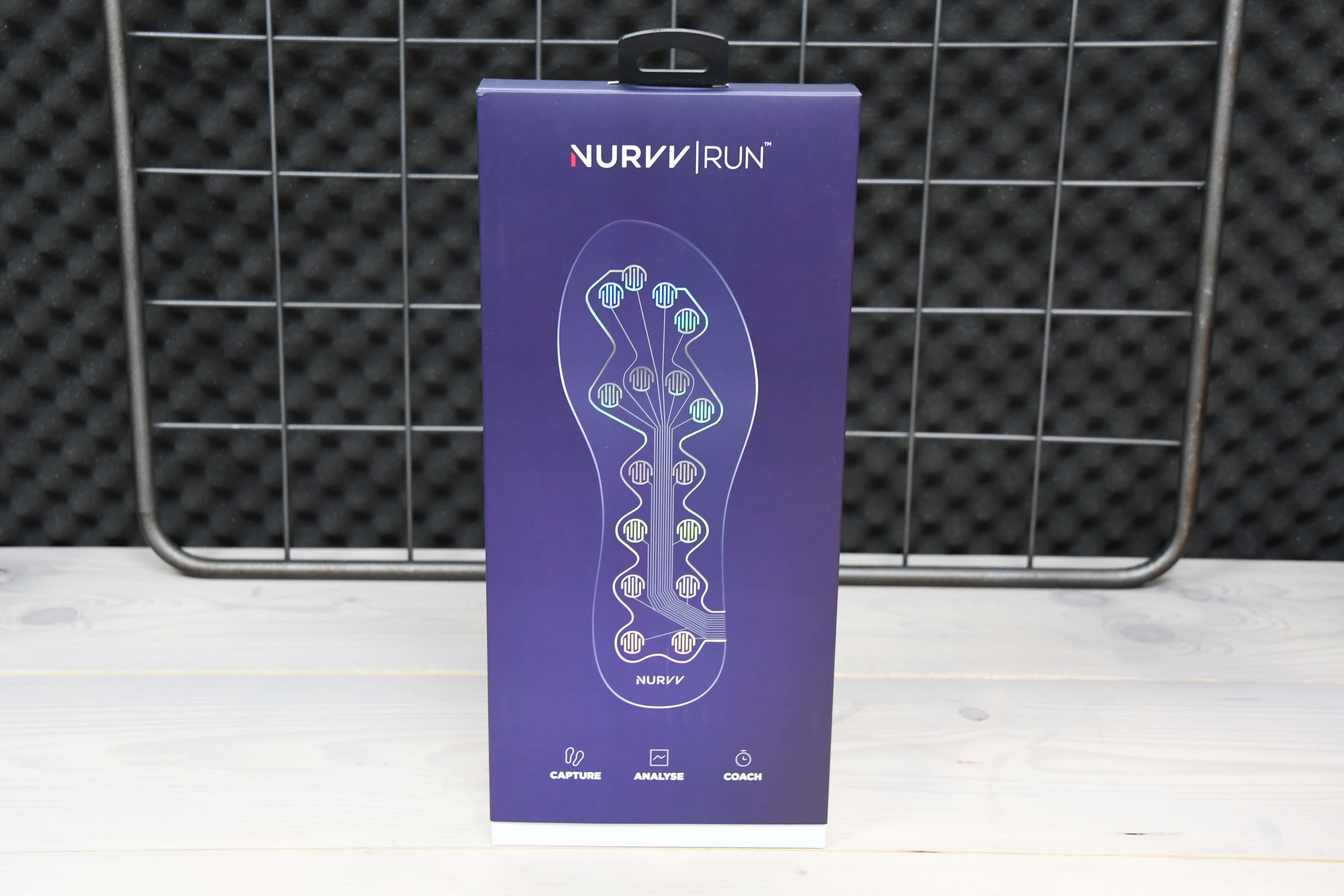
First up is the hardware, which is critical (and required) for the entire NURVV system. Unlike some units you’ll buy, this is very shoe-size specific. Depending on your shoe size, they’ve got one of six different insole sizes. Thus, resale of these is unlikely unless you find a buyer of the same size. Here’s the box they come in:
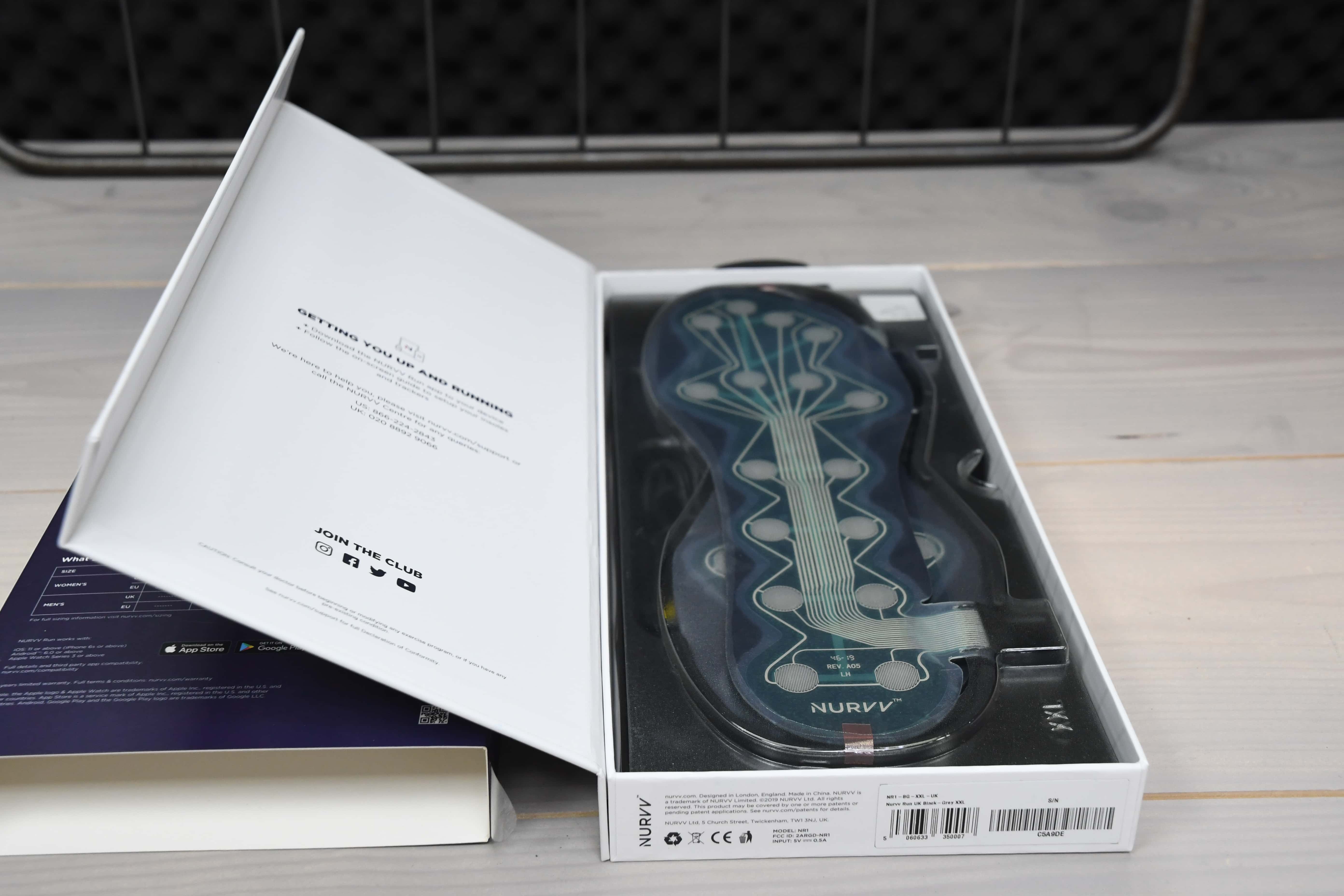
And here’s the contents:
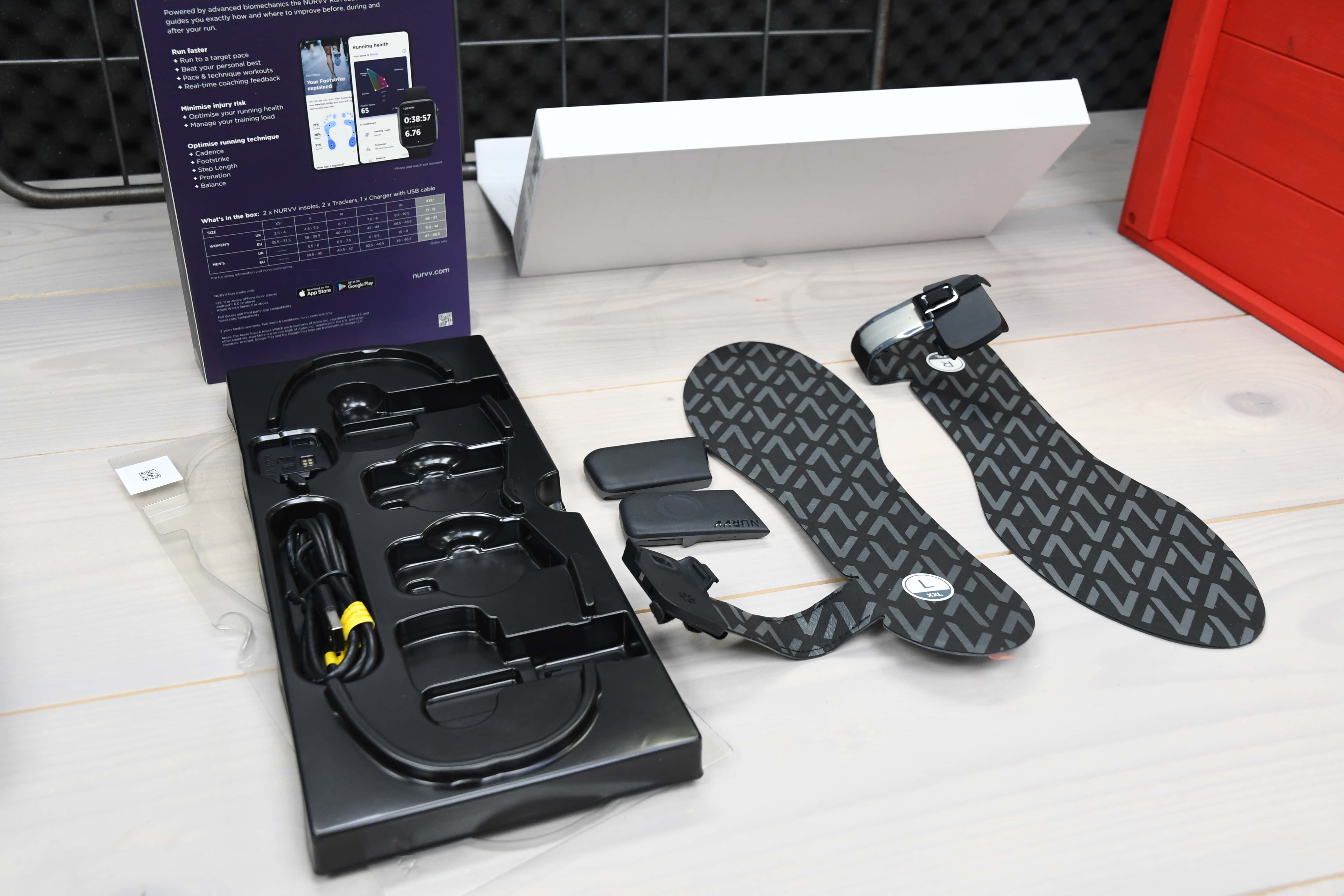
Essentially you’ve got the insoles themselves, a charging connector (+ micro USB cable), and then the NURVV pods that connect to the insoles.
You can see the insoles are crazy thin. Each insole has 16 sensor/pressure pads spread across the full surface (32 if you count both insoles):
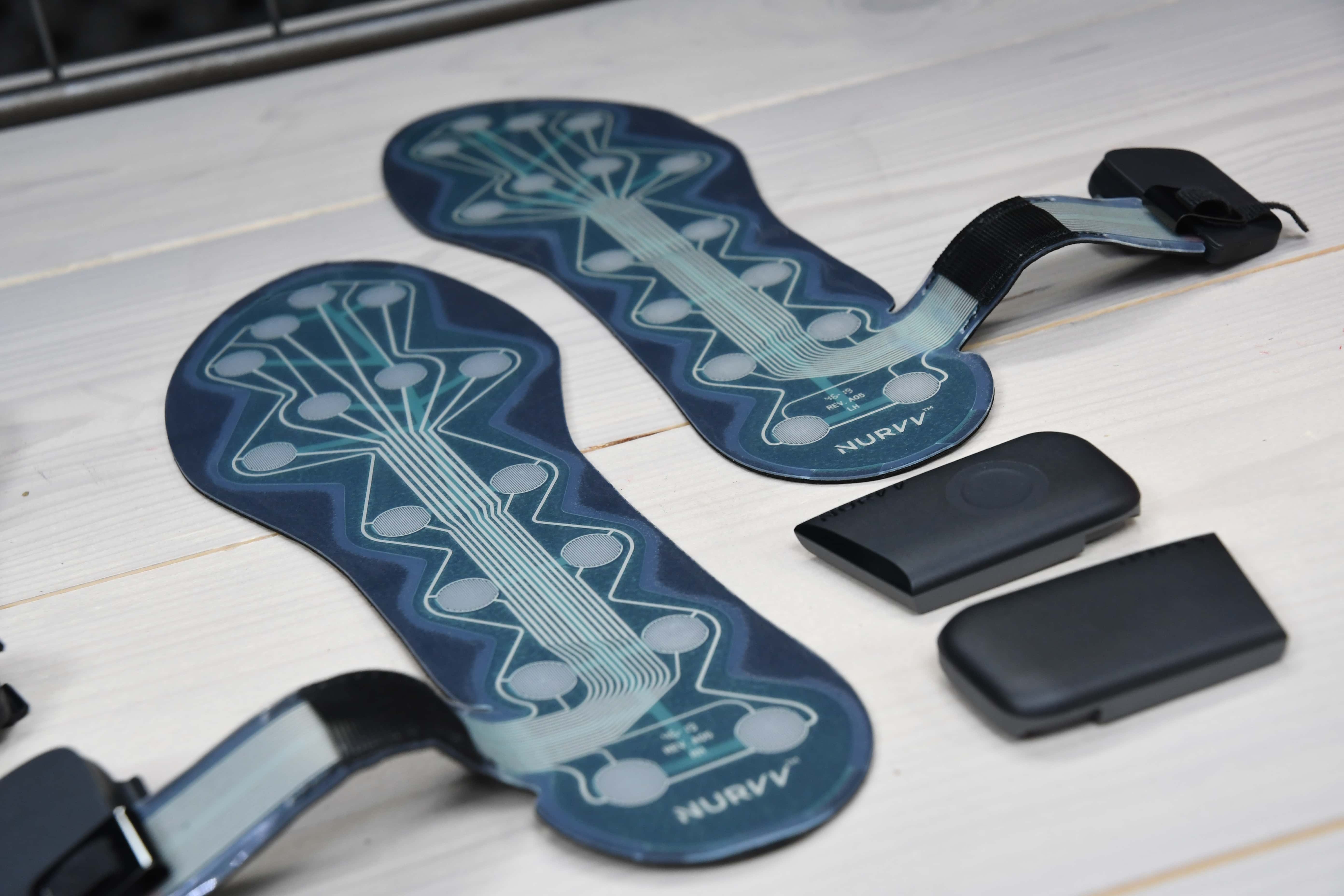
These sensors then provide data, including the foot strike location and pronation information. Whereas aspects like elevation or distance/pace will be derived from the pods.
To get them installed, you’ll remove your existing insole for a moment, and then slide these underneath it, then replace the insoles again. This is notable compared to a few other systems I’ve tried that act as the insole that your sock touches. In my experience those products eventually die due to the constant rubbing between sock and insole (just as your insoles eventually normally wear out). But by placing these below the normal/main insole that should alleviate this a bit. But realistically that’ll take a long time to find out.
The company says they’ll last 1,500mi (2,400km) of running, after which they can be replaced for $80 (you don’t have to throw away the pods). To help you on the math, they’d last a year if you did ~30mi/50km a week.
Speaking of the pods, they attach on the outside edge of your shoe, via a thin ribbon cable that you’ll ideally not notice. The entire insole + cable/connector comes in at 22g each, which I also didn’t notice (but I don’t wear lightweight shoes). The pods are 55g each, and I haven’t noticed those on my gigantic feet either.
Now, I say ‘ideally’, because that’s the best way to describe it. In my case, on my first run, my (poor) choice of socks that day meant the cable was rubbing on my ankle skin, which in turn meant I left a small blood trail the entire run. No really, I’m not kidding. I have photos. It looks like I was attacked by a squirrel on my run.
This was largely my fault – I should have worn socks that didn’t expose any skin for that run, until my skin got used to that slight bit of rubbing. Each shoe will be different, as will each foot. Now two months later, I don’t notice it at all (nor am I leaving a bloody trail in the snow).
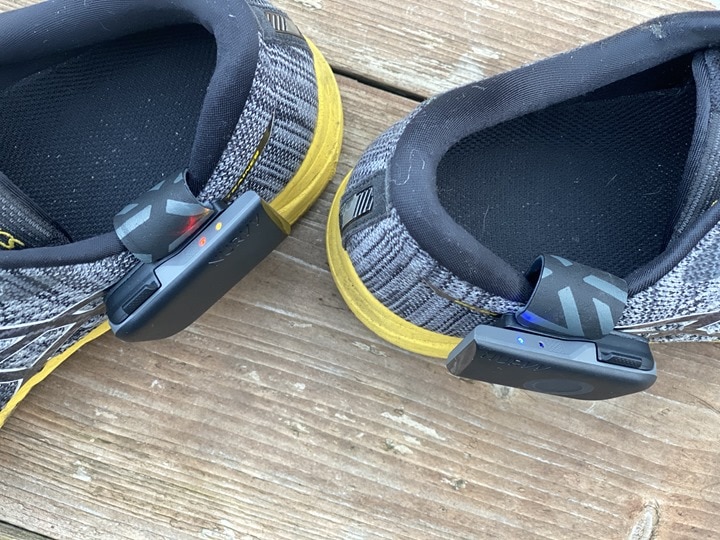
Each pod is exceptionally well attached to the ribbon clamp. Arguably a bit too well some days, but it’s definitely not going anywhere. With a fair bit of force though, you can unlock/snap it from the shoe clamp, to then charge it in the charging connector.
The charging doohickey charges both pods at the same time. The battery life of the pods is unfortunately only about 5 hours, so many runners will likely have to charge at least once per week to get through a full slate of workouts. The app will tell you exactly how much running time is remaining:
While I’m going to cover the app in more detail in the next section, that’ll mostly be for the analytics side. For now, let’s continue with some app settings type stuff related to the hardware. For example, above in that screenshot, I can also see the exact firmware version of both pods, as well as the serial numbers. I can toggle on and off autopause, which will do exactly as it says if you stop for a stoplight or an ice cream mid-run.
Also up there is the ANT+ ID for the internal footpod. This is because the unit can broadcast as an ANT+ footpod to devices, namely Garmin & Wahoo watches, to connect to it for more stable pace. In fact, you could even use this for Zwift running if you want to, as it would broadcast as the running footpod that Zwift needs.
In addition, it can also connect via ANT+ & Bluetooth Smart to heart rate sensors (straps, or even Garmin watches broadcasting), as well as via their Apple Watch app from an Apple Watch. I’ll give credit here, they’ve done the homework and thought this through, and implemented it properly. One has to wonder how a tiny startup can properly get heart rate via an Apple Watch, yet a billion-dollar company like Peloton is too lazy to enable Apple Watch HR broadcasting via a tiny Apple Watch app to their Peloton Bikes. I mean…just sayin’.
Now, that said – it’s actually not working for me anymore. I mean, it was until yesterday – happily paired to a chest strap, except then I went to re-do the pairing screen. Partly for this review, and partly to check something else out, and since then I can’t get it to re-pair as a sensor. I haven’t troubleshot extensively, but I was wearing like 6 heart rate sensors at the time (and just one right now) – so invariably it should have found *something*.
Within the settings you can also test the sensors. Which is like playing a light-up version of Twister with your feet. Though it serves zero training purpose, it’s fun and satisfying. Of course, it’s also (primarily) there for troubleshooting.
Finally, within the settings you can change the units of measurement and connect to Strava. Given the platform doesn’t have any other exporting method, connecting to Strava is kinda important.
At the same time – I don’t really understand who the consumer is here that wouldn’t likely have a TrainingPeaks account. Thus the lack of connection option beyond Strava (including lack of TrainingPeaks) is kinda weird. Same goes for lack of ability to export any workout files manually if you wanted to, such as to analyze elsewhere.
Which, makes it as good a time as any to dive deeper into the app.
The App and Data:
As odd as it may seem, in many ways the hardware isn’t the primary piece of the NURVV platform puzzle. Yes, it’s fed into the app and shown in numerous places, but it’s also not actually going to be critical path to every interaction you have in the app. A lot of what the app is trying to get you to do is shed light on how much you should be running each day/week, based on keeping you healthy and safe. As any running coach will tell you – the most important thing in coaching running to getting an athlete to the starting line healthy.
It’s far too common in running to add too many ‘miles’ too quickly, resulting in injury. Because the NURVV app is not only tracking your miles, but shifts in your running form, it can theoretically detect where things are faltering, and tell you to pull back a bit. This includes looking at risk areas like balance and footstrike, but also more simplistically your overall running training load. But that does assume it’s aware of all your training load. If you do runs without it (or, forget to turn it on), it skews the data.
Now when it comes to capturing a run, you’ve got two basic options:
A) Run with your phone, and the app running, connected to the pods
B) Run without your phone, with the pods track everything, and download it later.
I’ve primarily done the second option, since I’m mainly interested in the after the fact data. But I have done some ‘coached’ runs using the app live. So we’ll start on that real quick. For example, yesterday I did one where I went in and had it create a new Pace Coach workout. For this one, I selected a Performance Run, which allowed me to choose a target score. This score varies based on intensity. So it offered a suggestion, based on my current training load, and then I tweaked it based on how I felt:
The tweaking is important, because in my case I’m also doing cycling workouts too – which this can’t account for. So I leaned it slightly easier, which it then showed me a focus on technique with a specific cadence and footstrike length, which is basically then driving my pace.
My issue here though is that’s an exceptionally low cadence by most metrics. If one were to ask my running/triathlon coach about my cadence, he’d mostly laugh at how low it is – even for me. And while I’m not here to preach on high or low cadence and the benefits of it, in general there’s plenty of studies showing the benefits of a moderate to higher cadence (not crazy high). Whereas this workout was specifically slowing my cadence down. I’ve never seen a coach or study try and indicate things going that direction (especially down to 160spm). if that’s self-selected, sure, but that’s not the case here.
Thus: Why is it trying to drive my cadence? At no point does it explain that (other than telling me approximately every 15 seconds the entire run to slow my cadence). More so though, before I created this workout, it actually told me I shouldn’t run more than 6.3 additional miles the rest of this week (Next 7 days, bottom left screen) to prevent injury – yet here it is suggesting an 8.13mi workout (right screenshot). These two don’t mesh.
Sure, the lowered suggested 7-day numbers were mostly because I had forgotten on some runs to start it at the beginning of the run – thus it thinks I’m running less than I really am. But that’s irrelevant here. If it truly believes in its own recommendation, it shouldn’t be telling me to run 30% longer than the recommendation max, especially in a single workout
In any case, I went ahead and ran anyway at the easy pace I had planned, and soon it was showing me my step length and cadence, as well as pace and distance. And it very persistently, for the entire run, let me know my cadence was too high still – approximately every 10-15 seconds. Each mile it would audibly tell me my lap pace as well.
There aren’t any other data pages to switch to, at least for this workout. What you see above is the sum total of it. Nor did it give me any other guidance for this workout. Also, notably – there are no interval workouts or such in the app – everything is about changing cadence or stride length.
I finished up my run at 7 miles (as opposed to the 8+ it wanted), for no particular purpose other than that’s the route I had set out. At this point, it gave me a summary screen showing my run score and target – which, I think were pretty darn close – though, I was a mile shorter than it thought I’d be.
Within the history of that workout, you can also see more general stats too:
The less normal stats are of course the pronation and footstrike ones, which you can tap on to see more information. For example, first, we’ll start with the pronation bits. All of this is impressive data, from a geek’s standpoint. And I can then tap to see the recommendation.
However, the first line of “How can I improve?” somewhat encapsulates my issue with many running efficiency products:
“How can I improve? If running pain-free, you may be best advised not to change your Pronation.”
Which, I’m running perfectly pain-free. Thus, many running coaches and PT type folks would say: Don’t break what’s not broken.
On the flip-side, some PT folks would say my pronation is so horrible I should be doing all those things up above to increase flexibility in an effort to stave off long-term injury down the road. And thus this is what the core of NURVV is trying to address – tracking this data long term. The idea that I could do these exercises over time and then see the results in the app. Some of the suggestions are relatively easy, such as ankle stretches. Whereas others, like trying to increase step-width – seem like a recipe for injury disaster without proper guidance.
Of course, I’m not a doctor. And I’m sure there will be some folks in the comments that’ll give guidance on what to do – probably even conflicting guidance between each other.
Moving along, we’ve got the same detail for footstrike:
And again, it’s cool data, if you’re in need of changing your footstrike pattern.
Beyond those two metrics, all of the other metrics are pretty standard running watch stats – things like cadence, elevation, calories, heart rate, etc… So really, the main value here is those two metrics: footstrike and pronation. There’s also training load, which you can see in the above screenshots, though again, most running watches above $200 these days are providing a training load element. An exception to that being an Apple Watch user, which wouldn’t get that kind of data.
You can see some of the training load data within the Running Health page, which aims to encapsulate all of this into a single chart – showing their core metrics overlaid in one chart, along with the breakdowns below it:
You can then dive into each of these sections to get more detail and plotting over the last 30 days, also notably the runs I managed to @#$#-up forgetting to press record/start in mid-January. Sigh.
Now, I showed above starting a workout using the app, but you can also start a workout using just the pods/shoes without your phone. To do that you’ll head outside and stand around like you normally would to find GPS. Except this time you’ll press the small button on the inside of each pod:
Somewhere between 15 and 45 seconds later, it’ll find GPS, and give you a different color coding. At which point, you can press the big side button to start recording your workout. When you’re done, you can simply power off the pods to save it.
And in fact, this is how I did the vast majority of the workouts. At which point, when you turn back on the shoes/pods it’ll sync to the smartphone app and upload the workout to Strava automatically.
Thus, let’s talk about that GPS then.
Accuracy:
Accuracy of the NURVV running hardware could be evaluated in a few different ways. I’d categorize them:
A) Insole pressure detection aspects
B) Running stride detection aspects
C) GPS accuracy of the pods
We could also then evaluate things like the recovery metrics and such too. But that gets away from data-driven science and into more coaching philosophies. So, let’s focus on the sensor-driven numbers.
First, we’ve got the insole pressure aspects, which drives analysis such as pronation or footstrike. For that, I don’t have secondary sensor systems to validate it. And ironically, while there is a location very close to me here in Amsterdam that can do that live gait analysis and then see if the two mesh – they’re currently closed due to COVID-19 restrictions. So that limits that (though, I can’t export that data anyway, so that’s moot too).
Second, I then tried to look at aspects like cadence accuracy, but unfortunately the NURVV platform only exports to Strava, and when you download the original file from Strava, that’s stripped out. There isn’t a way to natively just download the original .FIT file or such with that data included.
Thus leaving me with GPS accuracy of the hardware pods (non-phone scenario). And I think this is part of the challenge. Simply put: It’s not good.
For example, this run against the FR745, Polar Grit X, and Wahoo RIVAL, where the NURVV pods are often well offset – some 50m or more, into the trees, water, or buildings:
Or this run, where even the 15-year-old Garmin FR305 easily bested it, with NURVV often off in the water or woods.
Which isn’t to say every aspect of the run is bad. For example, later that same run you’ll see it handles one loop of the triangle island fine, and the track mostly fine for two loops. The stadium caused some issues though.
Or this other track run, which at first looks OK, till you realize the number of times that black line of NURVV crosses the football field.
Of course, if you use it with a phone (in my case an iPhone 11 Pro), then the track is spot-on as it doesn’t use the GPS from the pods. But of course, that requires taking your phone with you.
So on one hand, while I do appreciate the concept of putting the GPS pods in there, I don’t think it adds anything for this target market. After all, this level of GPS accuracy won’t be acceptable to my Mom for her casual daily runs for general fitness, let alone anyone that’s training for a goal. Not to mention you’d never hear the end of it from your Strava buddies when you uploaded non-stop drunk GPS tracks.
I think this is an area where they should have taken the approach that Stryd did – which is to create a 3rd-party 1st integration platform (with Garmin, Polar, Suunto, COROS), and then sync those files with GPS data back to their own platform. From there they can merge it with the more advanced data from the pod and create one cohesive picture.
But that sets aside the bigger problem I’ve found over the last 3 months for me, which ended up being something more simplistic: I forget to press start on my shoes.
Seriously, since mid-November, I’ve probably forgotten to press start on the recording for about half my runs. Sometimes I’ll remember later in the run, but sometimes not. That’s because I’m primarily using them for post-run analysis, as opposed to during-run coaching using the phone, as the coached phone workouts are basically all just cadence driven workouts. If you were doing coaching (perhaps if they expanded more), then you’d more easily remember because it’s part of pressing start.
But for after-run analysis, this is where a Garmin Connect IQ or similar watch app would be able to give you notice that it’s not connected yet, reminding you to start them up – or even starting them automatically.
Ultimately though, beyond GPS – it’s not possible for me to adequately compare and measure accuracy for these devices.
Wrap-Up:
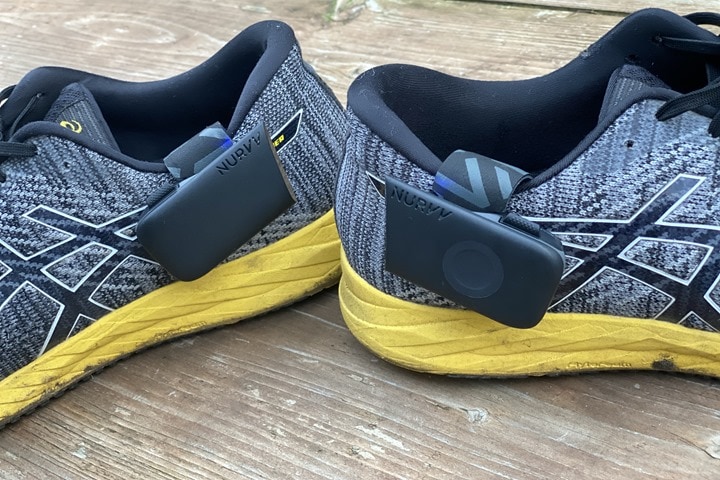
It’s plausible – likely even – I’m just not the right customer for running efficiency type products. And while the NURVV running system is by far the best attempt I’ve seen in this category, it’s still a really tough pitch for me to recommend. I struggle to see who the people are that would spend $299 on a pair of insoles atop a running watch, only to get data that’s not really integrated between the two of them (yet). And even if it was integrated, much of the information is duplicate in nature with what modern watches from Garmin and Polar provide – with only a handful of pieces like pronation and foot strike that’s unique.
Which isn’t to say it’s useless. Certainly there’s plenty of studies out there that show the benefits of some of the ideas they’re trying to install, and certainly, reducing running injury is a kinda-important thing for runners….to keep running. And I can see the framework of what the company has laid out there. To use the house analogy a second, they’ve framed up one heck of a house. You can clearly see the outlines of rooms – though the wallboard or flooring isn’t there yet. But you can even see the foundation for a pool outback. But as you walk around the house you realize it’s far from finished. It’s probably got another round of construction to the point you’d want to live in it yet. Someday – definitely, but today is a tough pitch.
Ultimately, I want to see these things fleshed out. I want to see integration with the platforms that a buyer of this device would expect: Integration with TrainingPeaks, true and full integration with Garmin devices (NURVV says this is coming next quarter), structured workouts beyond just cadence drills from the coaching app (the help guides hint at this), improve GPS accuracy, and have proper data export beyond just basic Strava sync. Give me all that, find a way for me to remember to press the darn start buttons, and I’m there…or here. I’m somewhere – it’s cool, and eventually I want to be onboard that.
With that – thanks for reading!
Found This Post Useful? Support The Site!
Hopefully you found this review/post useful. At the end of the day, I’m an athlete just like you looking for the most detail possible on a new purchase – so my review is written from the standpoint of how I used the device. The reviews generally take a lot of hours to put together, so it’s a fair bit of work (and labor of love). As you probably noticed by looking below, I also take time to answer all the questions posted in the comments – and there’s quite a bit of detail in there as well.
If you're shopping for the NURVV Run Insole Running System or any other accessory items, please consider using the affiliate links below! As an Amazon Associate I earn from qualifying purchases. It doesn’t cost you anything extra, but your purchases help support this website a lot.
And of course – you can always sign-up to be a DCR Supporter! That gets you an ad-free DCR, access to the DCR Shed Talkin' video series packed with behind the scenes tidbits...and it also makes you awesome. And being awesome is what it’s all about!
Thanks for reading! And as always, feel free to post comments or questions in the comments section below, I’ll be happy to try and answer them as quickly as possible. And lastly, if you felt this review was useful – I always appreciate feedback in the comments below. Thanks!


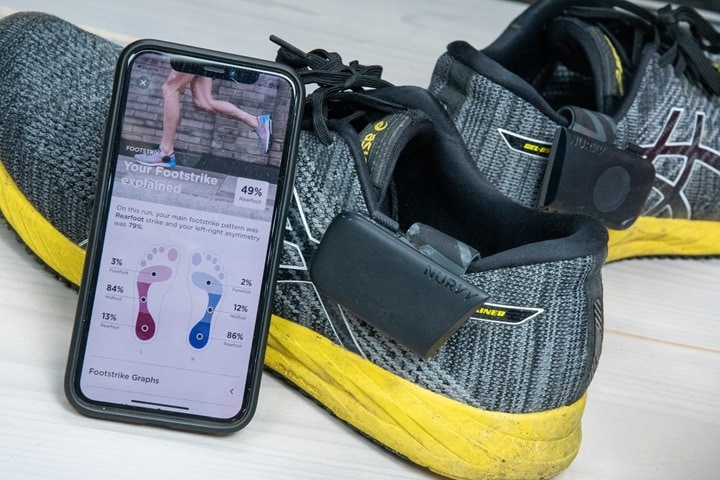
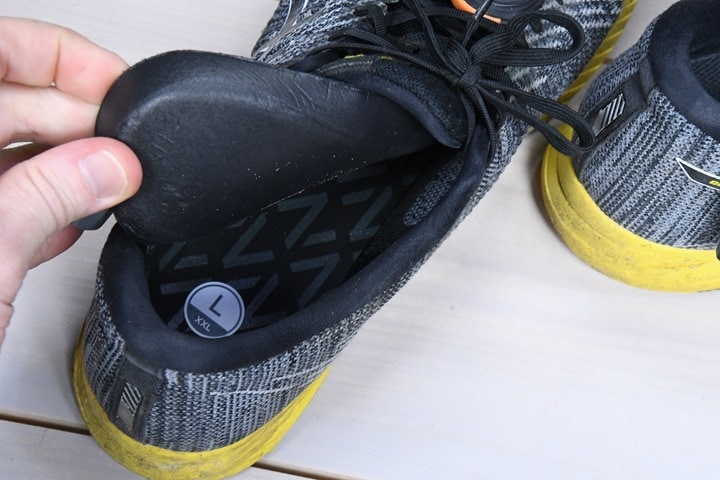
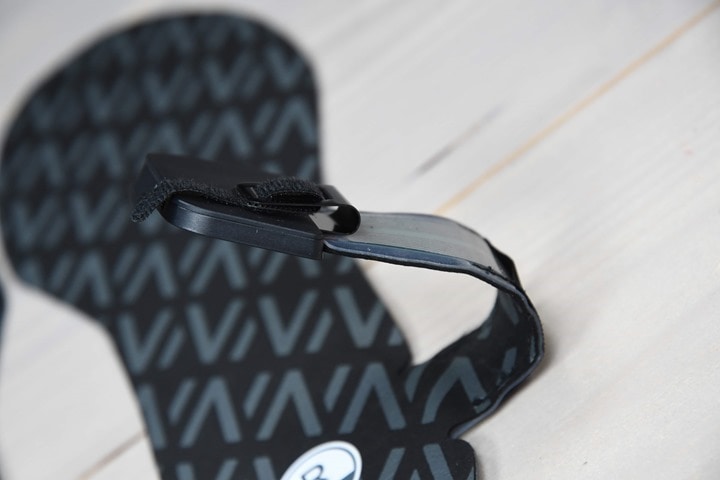
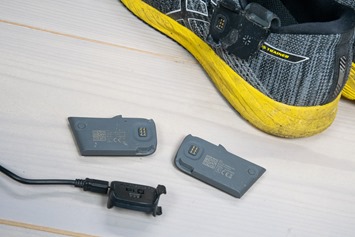
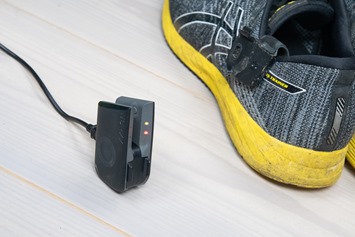
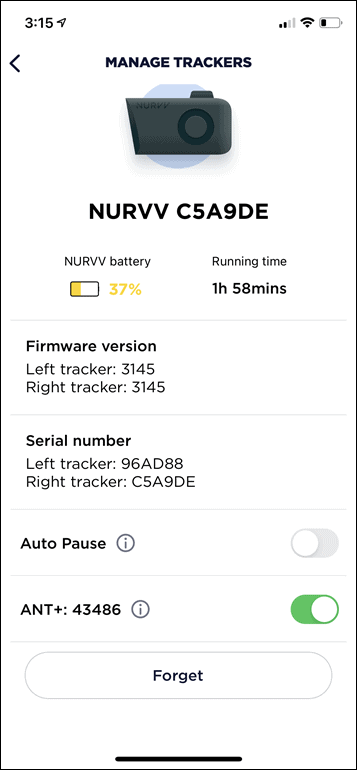
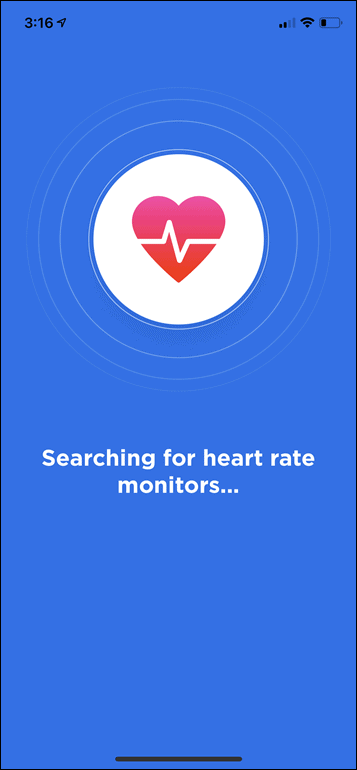
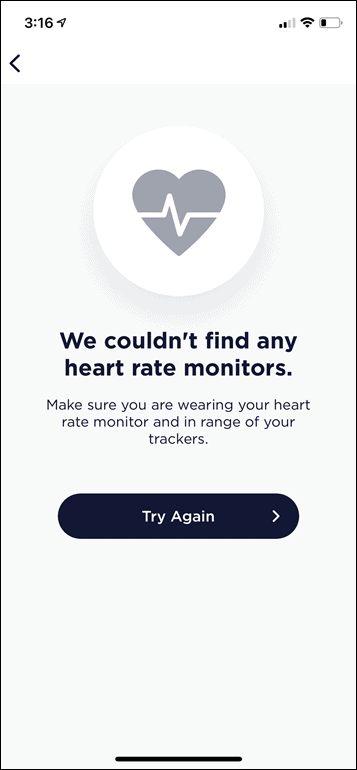
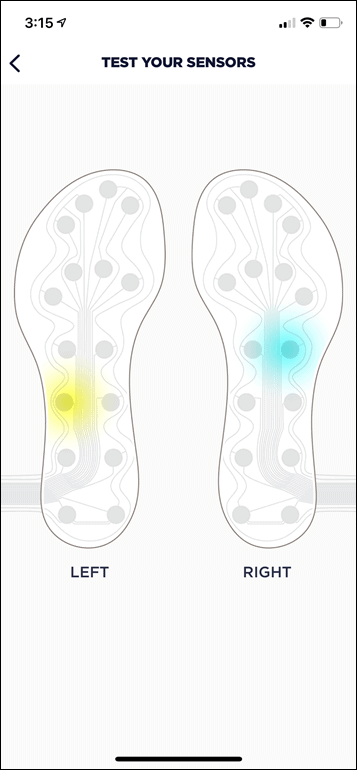
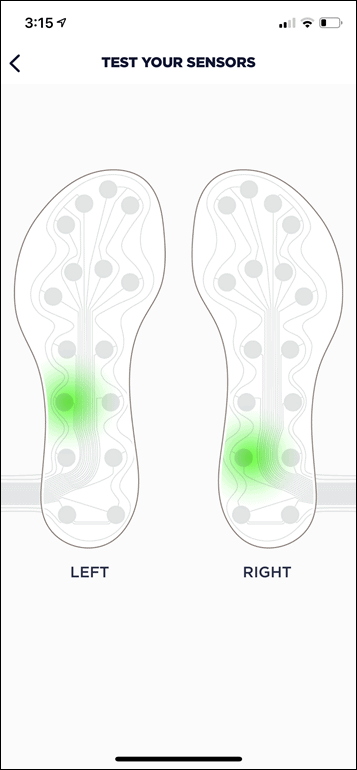
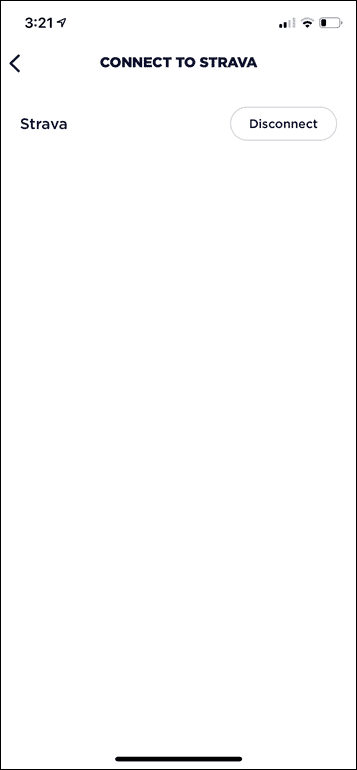
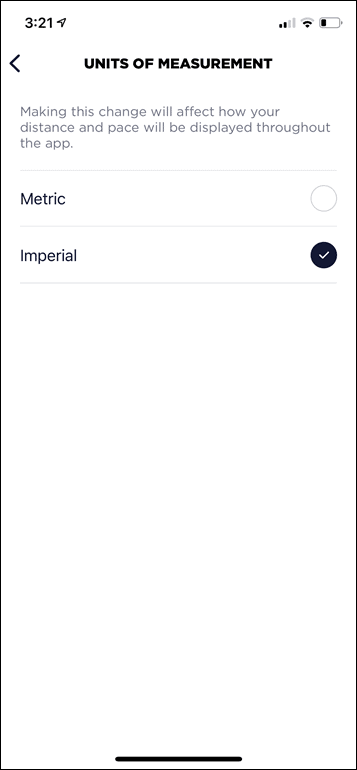
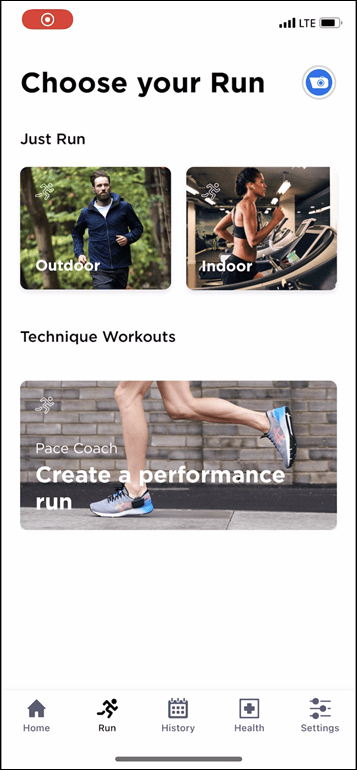
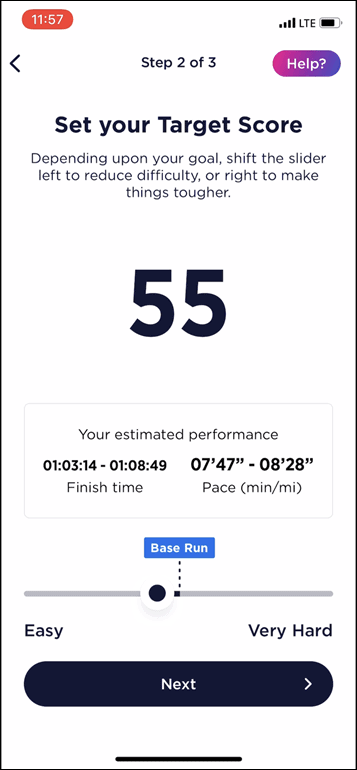
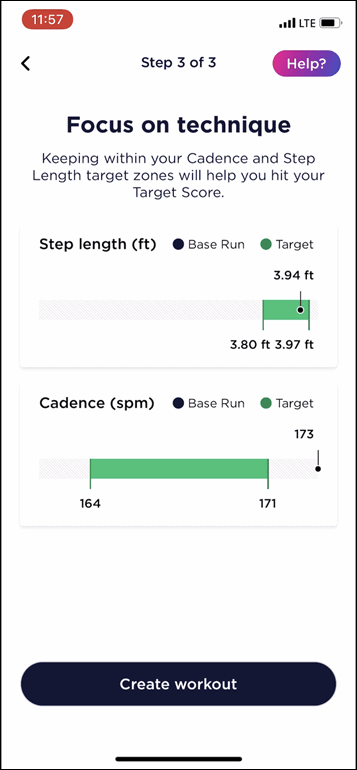
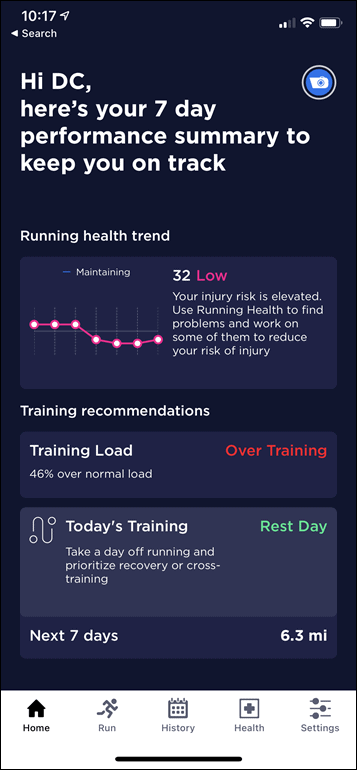
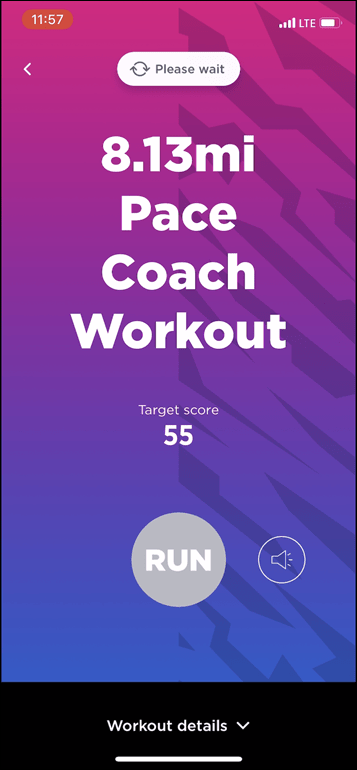
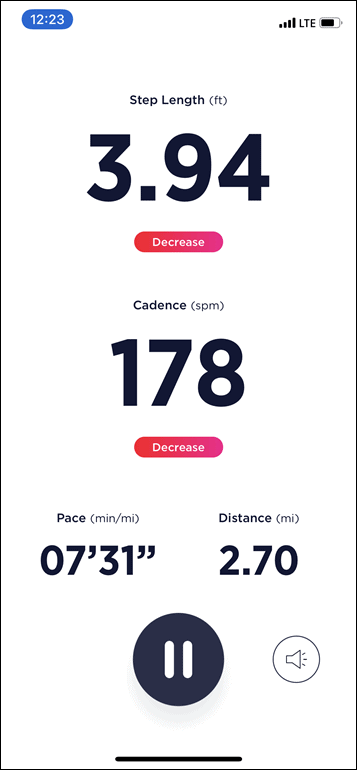
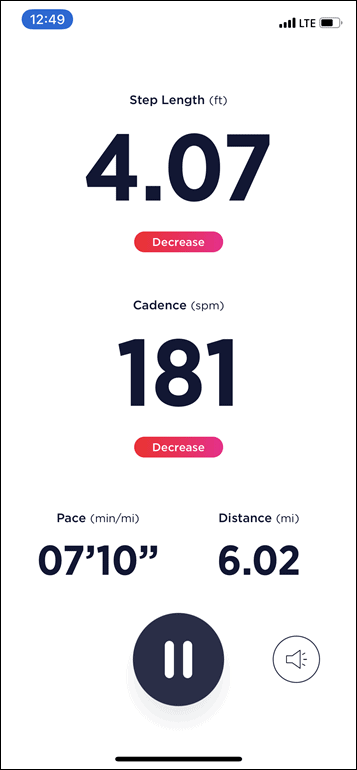
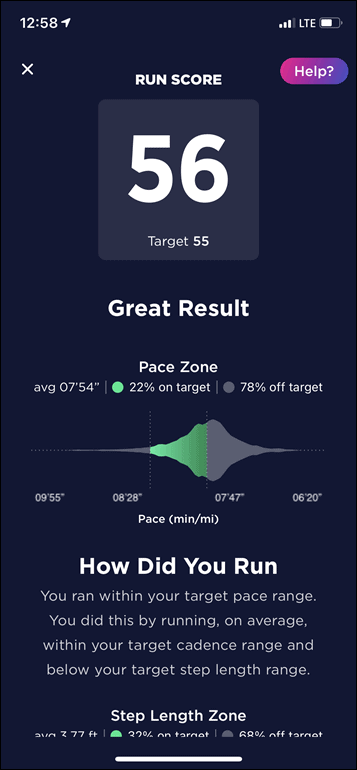
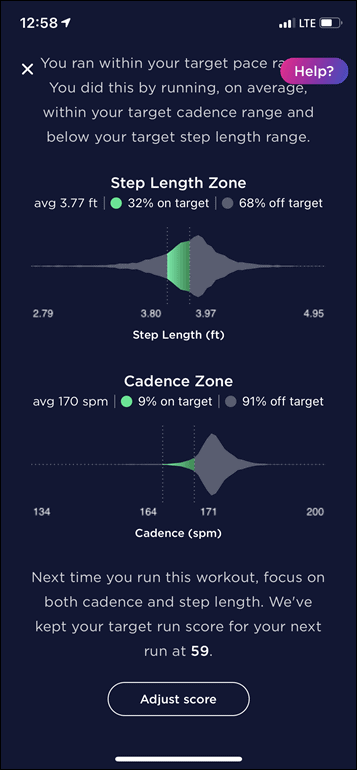
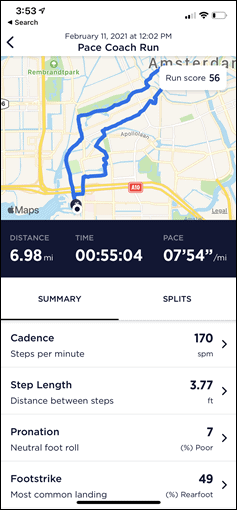
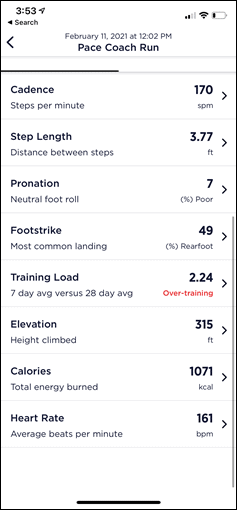
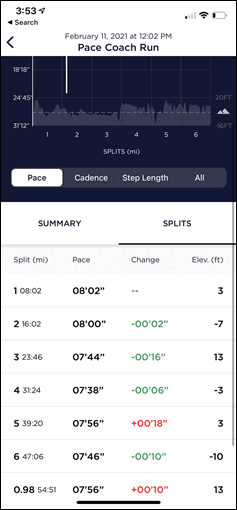
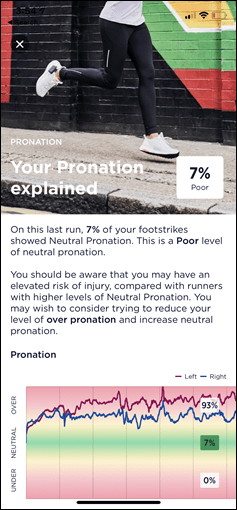
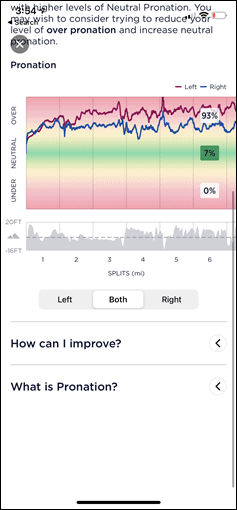
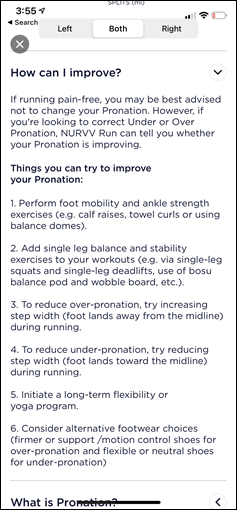
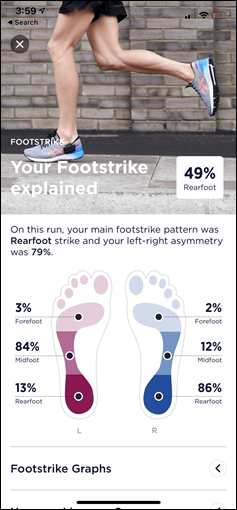
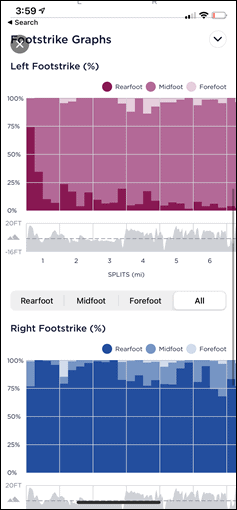
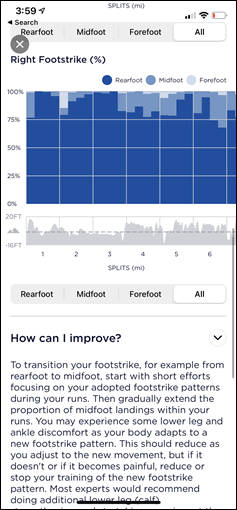
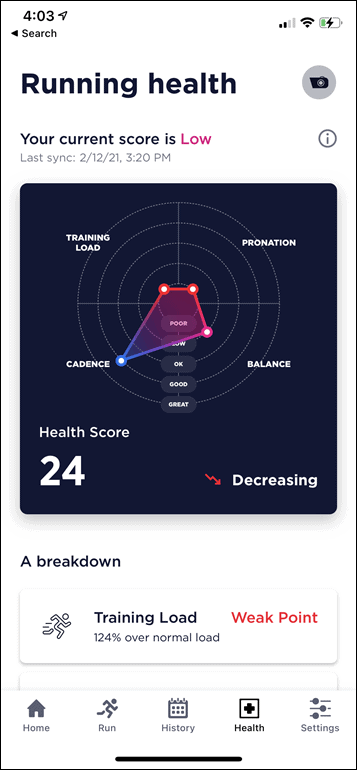
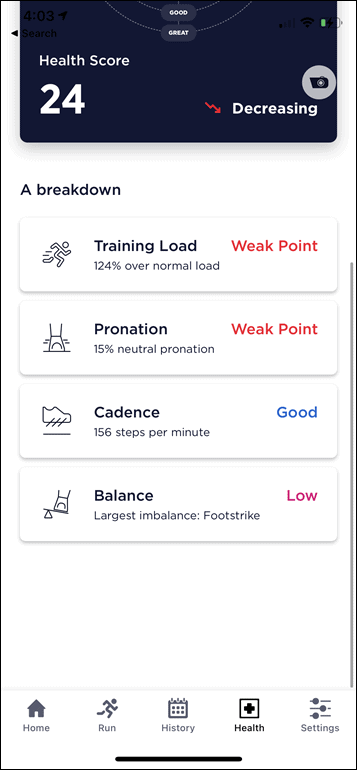
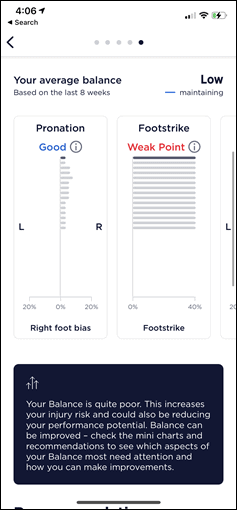
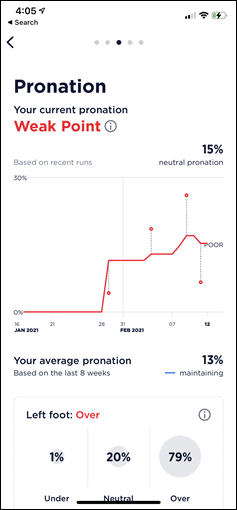
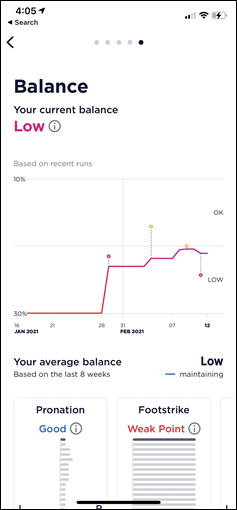
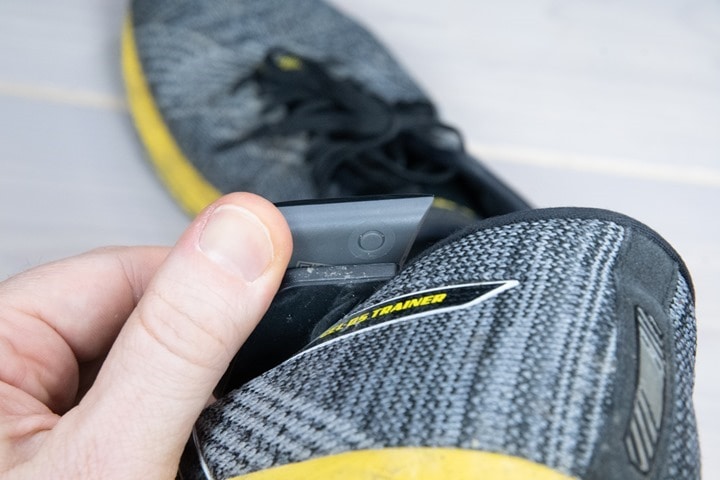
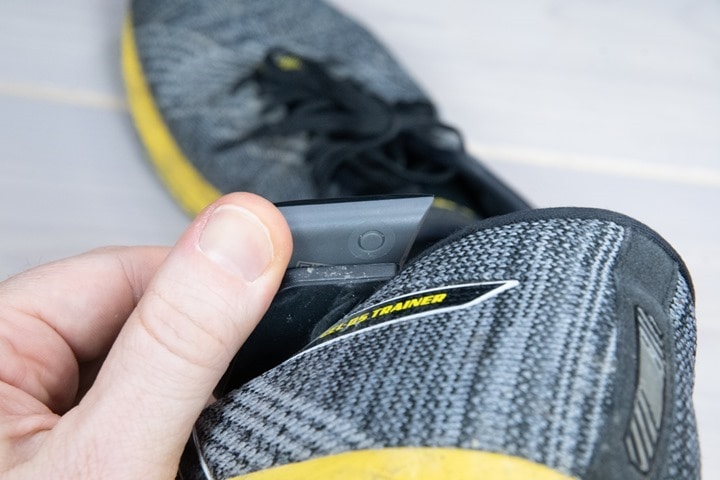






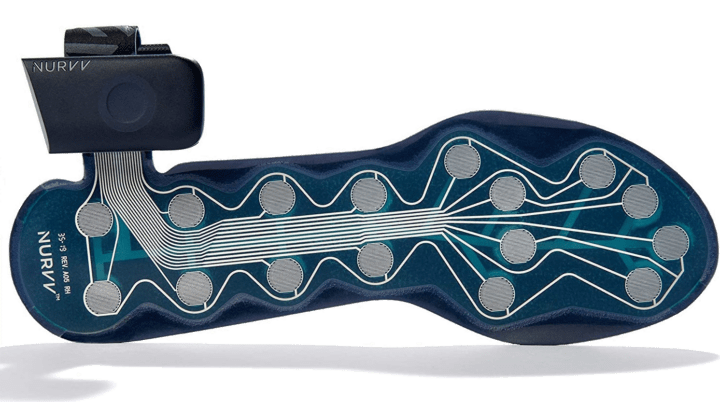
















“In my experience those products eventually die due to the constant rubbing between suck and insole.”
While not entirely the word I was looking for…it’s also not entirely incorrect either. ;) Thanks!
sadly I have to agree with @jr
and add
the fundamental flaw that many companies make is that they want to capture the mass-market (95%) Garmin customer that makes their product viable yet, as you say ray, they don’t fully integrate with the Garmin customer environment (CIQ).
If Company XYZ expects you to change your app ‘life’ from a Garmin watch to an XYZ iOS app…folks…it ain’t gonna happen.
that’s why i didn’t look at Nuurvv even though they are based a mile or so from where i live..
that’s why stryd works, it fully integrates (running power CIQ) and then it gives the option of expanded analysis of extra gait metrics on their Powercenter.
sorry Nurvv.
“but I don’t right lightweight shoes”
Hey Ray. Just a heads up that the image file for foot strike is the same as the pronation one!
Thanks, swapped out!
What is the water proofing for these guys, would it survive running through flash thunderstorm?
@Justin B the trackers are rated to IP67 and the insoles are tested to withstand repeated immersion in water. We wouldn’t recommend fly fishing or fording rivers, but the product will definitely withstand heavy rain and deep puddles.
Hope that helps,
Geoff (NURVV Run Product Manager)
Pronation data appears twice and foot strike data is absent.
Thanks, swapped out.
I wonder if this could be used for inline/ roller speed skating.
I’m sure it could record data, but would it be useful to you when it was analyzed as if you were running? How much does “foot strike” or “pronation” have to do with skating? (And even for running, what’s the point?)
For skating you could track whether you apply the pressure evenly or skew or to one side. When I skate, I notice that I often push onto the inner side of the skate.
Considering that skates (both ice and roller) are always with hard bottom and heavier / bigger than any running shoe, adding these metrics would actually be interesting and less obtrusive.
I tried the Arion insoles some years ago, which look almost identical to to these, and had the exact same issue: lots of interesting data, but no integration with existing ecosystems or ways to export it. It was in no way capable of replacing my Garmin, so it needed to work alongside it not separately.
I wonder if the suggestion to slow cadence AND increase stride length would be beneficial long term?? It would be interesting to understand their thinking with those recommendations.
But like you I’m not in the target market (and not sure who’d buy this??)
Yeah, I guess I really don’t get the long-term recommendation there either though. I mean, I don’t think I’ve *EVER* heard a running coach try and slow down running cadence. Ever.
Looks like the Coros is suffering from the offset problem with Track Running more than the Garmin.
It’s actually a failure to recognize the track properly. An algorithm error. It has problems with that specific track for some reason.
The real-time visualisation of your footstrike while treadmill running looked to be the most valuable feedback. A few YouTube reviews demonstrate it.
Yeah, the footstrike trainer is an interesting concept in theory, but in practice – to what extent?
Meaning, the growing body of evidence is doing away with the whole ‘change your footstrike’ concept over the last few years, instead, focusing on the realization that not all runners are the same. I mean, even NURVV’s own website disputes this concept, for example, starting with:
The main homepage says:
“Explore how different foot landings feel, monitor whether you can maintain your footstrike as you fatigue, and ensure you are running with a balanced form”
But yet upon clicking on the footstrike trainer details*, it says:
“While many coaches and biomechanists dispute the efficacy of one footstrike over another” – after which they revert back to needing to know this information to maybe change it to maybe reduce injury. Or not.
Again, I think this type of data could be useful for sport scientists or even running shoe stores (which sometimes have their own tools for looking at addressing various things like pronation). But I’m really struggling as to why a non-injured runner needs this data, or should even be blindly following a universal recommendation to adapt to a specific footstrike and change ones pronation.
*https://www.nurvv.com/en-gb/stories/using-footstrike-trainer-to-adapt-your-footstrike/
Another vote for footstrike data being intriguing. Agreed the ultimately utility of it makes the price tag seem high.
It may be the case that successful runners naturally debug their form well enough that the investment is most beneficial for rehab scenarios. Beginners & those with multiple chronic injuries may be better off with more data but the initial spend is going to be a hard sell.
Unclear if I would destroy the outboard pods faster than they destroyed me. It would all need to be in the insole or the pod would need to connect wirelessly from a mount on the laces.
Hi Ray,
A quick response from NURVV regarding our thoughts on Footstrike as a metric and its utility to runners.
We agree, it is unlikely that there is a universal footstrike type that all runners should be using – which footstrike works best for an individual will depend on their specific mechanics and whether they are aiming to resolve a particular issue.
From an injury perspective there is some research evidence that runners who have suffered from anterior shin or knee pain may benefit from a more midfoot or forefoot foot landing, whereas those runners who have experienced calf / Achilles issues may benefit from moving footstrike further back.
In terms of footstrike asymmetry (balance) we already have a good dataset of runners who have seen imbalances as they carry injury/ pain issues on one leg, and this imbalance resolves as they get back to full running fitness.
From a performance perspective, it seems clear that no one footstrike type which guarantees better performance, given the full spectrum of footstrike types can be observed in top-level runners. This doesn’t mean that all runners are using their optimal footstrike, or that there is no performance benefit to be gained from footstrike adaptations for some runners. The emergence of “super shoes” and the question of whether they offer more benefit to runners with certain footstrike types (rearfoot / midfoot) is another interesting topic in this area.
What we’ve done with our Footstrike Profiles (post-run) and Footstrike Trainer (during run) is to provide the tools with which runners can monitor their current footstrike behaviour and explore what other foot landing types feel like, without attempting to prescribe a specific footstrike to all runners. Adding to this, we will be releasing additional features soon to support runners who have chosen to adopt a new footstrike over a longer timeframe.
Best wishes, Grant
Head of Biomechanics @ NURVV
Thanks Grant (and Geoff) for the thoughts and responses here – I appreciate it!
I’ve never been overly sold on products such as these at the best of times, but if I was to purchase such a product, it would be Stryd over this in a heartbeat. The killer for this is the faff involved in swapping over between shoes compared to Stryd. It’ll just become one more thing getting in the way of getting out the door as fast as possible.
I almost bought these when they were half price on Black Friday. I didn’t, so that says something about their price point!
If I could get just the sensor insoles with smaller pods that are only there to transmit data via BT or ANT+ to my watch I’d be in at around $200.
But the pod size, lack or Garmin (or any) integration, and price are all deal breakers for me.
What secures the pod mount to the side of the shoe? Does is the flat cable bend and hold its shape to keep the pod from flapping around, or is there some other means of attachment?
Hi Heinrich,
There’s a U-shaped hook on the end of the tail (flat cable). This hook is placed over the sidewall of the shoe and pushed down to secure the tail in place. There’s also velcro on the externally-facing side of the tail to help it grip the sidewall. We’ve tested running at all speeds, jumping, rapid lateral cutting motions and various combinations of all these things. Provided the insoles are correctly installed, the product will stay securely in place.
I hope that helps,
Geoff (NURVV Run Product Manager)
It looks like if one wears orthotics, these won’t work – correct?
I asked them about that – I wear the hard orthotics, and have had injuries so I’m really interested in the balance and the way that my strike changes as I fatigue to be able to target my running length to be building strength, but not spending lots of KM enforcing poor technique or risking injury.
And their response was that you put the sole under the orthotic. Which I’d be interested to see in terms of what it shows and what that does to the pad life – I’d expect the hard line from the heel could cause a local rubbing/wear, but interested.
But the interesting thing is, I’m probably exactly the target market. Analytically minded triathlete with history of running injuries and without an aversion to spending $ if it’ll help me (and I refer here to the $ I spend on physio, massage, and coaching). And yet the issue here, is that I’d want to be passing this data to the coach/physio, and that means export.
The lack of integration with garmin / TP definitely a block at moment, although as they aren’t available / shipping to me at moment a moot point.
I’m hoping that in the next couple of years this will get developed to where the house is up to show home standard. Seems the team have made a really good start, the hardware is there, so the software hopefully shoudl be the easy bit (albeit note that Tacx never got there).
Thanks Duncan.
As I wear hard orthotics as well, I’m skeptical of their recommendation. I just don’t see how it would provide reliable data.
Re: “…so the software hopefully shoudl be the easy bit…”. In my nearly 30 years of technical marketing, I’ve found the software component of an offering to be the most challenging.
@dkrenik @Duncan I hope I can help give a little insight on your questions here.
Full disclosure: I work for NURVV, so apply whatever size pinch of salt you think is merited :)
How does NURVV work with orthotics?
As Duncan has stated, the NURVV Run insole is inserted to the shoe first, so that it’s in direct contact with the footbed of the shoe, then the orthotic is placed on top. This has the advantage of preserving your ride comfort in the shoe, since you’re running on your preferred insole/orthotic. It also means we can measure the effect of the orthotic on the forces transmitted through it to the ground.
We’ve tested NURVV with lots of insoles and orthotics and never had any compatibility issues. Personally, I run with SOLE Active Medium insoles, which are a heat-moldable type. I’m not sure if they’d meet your definition of a hard orthotic, but they’re pretty rigid through the midline of the foot, especially on the medial side. I started using them mid-way through our product development to alleviate a persistent ankle injury that arose in part due to over pronation. They were an effective intervention for me in this regard, and I can see the difference in my pronation stats if I run without them as opposed to with them.
How does use of an orthotic affect the lifespan of the NURVV Run insoles?
I can’t offer hard data on this, since we don’t have many users at/near full lifespan on NURVV Run insoles yet. I can say that we haven’t noticed any additional or accelerated wear for orthotics users during testing, nor received any reports from users. If the fit is good, the NURVV Run insole is held securely in place between the shoe and the orthotic, so there’s not a lot of opportunity for movement.
Lack of integration with Garmin & Training Peaks
We’ll get there! We’re working on our first Garmin CIQ app right now. We know that this area is key for many users and that Strava integration doesn’t meet everyone’s needs, so more integrations will be added in future.
I hope that’s helpful. If you have more questions, let us know.
Geoff (NURVV Run Product Manager)
Any ways to get raw pressure data?
I use Nurvv Run. The pronation metrics is very valuable for me. After steroid therapy my left foot become weak and pronated. The pronation metrics helps to track recovery. But lack of any possibility to export pressure map is weird. I asked support and got the answer “we’ll inform our development team, blah-blah-blah”. This means backlog and also meant that this feature will never be implemented. It is also weird because I know that they have ability to export because they need to debug and calibrate insoles during development.
@Aleksandr I’m glad you’re finding NURVV’s pronation metric useful in aiding your recovery.
We welcome user feedback and I can assure you that your request was added to our backlog, and that, if we see enough user demand for it, we will implement this feature.
I can’t guarantee a timeline for this, because we’re a small team with a lot of possible directions we can take our product, so we have to focus on the ones that we believe can help our product to succeed.
You’re right, we do have the ability to collect raw pressure data, but it’s not as simple as flicking a switch to make this available to users – for one thing, the insoles are sampling pressure way faster than a user wants/needs to be looking at it. We’d need big changes to the way we process and store the data to make this available.
I’m sorry I can’t give a quick positive answer to your request, but I hope you can understand that what you’re asking for isn’t trivial.
Wishing you all the best for your continued recovery,
Geoff (NURVV Run Product Manager)
Geoff, thanks for response. I don’t need to observe data in realtime (I think, nobody needs). I need the way to collect data for further analysis. Any parseable format like CSV will be warmly welcomed.
Note: backlog == graveyard
Aleksandr, understood and I have noted your point regarding real-time data not being necessary.
I can understand your cynicism re. the backlog. We try very hard to ensure that things in our backlog get done, and I hope this can be one of those cases, given time.
Geoff
Real time data would be great, but just getting access to the full data in any format would be good. Its the issue I have with all of these devices, it is my data, why shouldn’t I have access to it?
@Sam we agree, and we are currently looking at options for fuller sharing of data with other parts of the running ecosystem, as well as the possibility of data export to an independent format.
There’s no philosophical barrier to this in our case, it’s just a matter of managing development time and the opportunity cost of doing this as opposed to delivering other features.
Geoff (NURVV Run Product Manager)
one year passed. nothing. as expected. toss to bin.
Another product that is dying in 3, 2, 1… Only the uber-novice runner will buy the immense level of BS these products sell. All disguised as super high-tech and ultra scientifically based (yeah, right…). Poor novice guy… Not only struggling to run 3 miles but also trying to match an arbitrary cadence and stride length number so he/she gets a virtual cookie like “Wow! You’ve improved your running form 97% with this run”. It will die a super fast death. It deserves to die. Won’t be missed. RIP NOOBIE… I mean… NURVV ;-) Complete DOA flop… Ray’s analysis super rich and professional as always. But even the manufacturer knows it sucks :-)
I feel pitty for you.
While the market is approximately 1 millionth the size -this could be really, really interesting for nordic ski (especially skate) training and racing. There is so much technique and countless drills to teach how to land and glide on a flat ski for as long as possible and then smoothly roll to the inside edge for the kick and a lot of specifics about where to be balanced fore/aft depending on the situation. This might actually be able to quantify and show progress in that regard.
Yeah, but for that you’d need access to the raw data from the sensors themselves. Skiing is not running, so analyzing it as if it were isn’t going to be useful.
I guess they would not work too well for bare-foot runners either. Oh well.
duct tape?
Hi Ray,
thanks for review, the NURVV looks interesting from a technical standpoint, though I fail to see what information it can give to people that cannot be obtained via existing running dynamics / running power data.
Considering the pod hanging on the shoes this implies that you put these into your shoes once and keep them there until they need to be replaced. And likely you don’t wear said shoes for anything other than training. All these things bring the obvious question – why don’t they automatically track sessions? They could start a session as soon as pressure pads on the insole are triggered and even activate GPS to record a workout. Or don’t activate GPS and estimate distance from your pace and previous GPS-enabled workouts to get an idea of your stride length. You can even filter out occasional walking by monitoring cadence. Sure, it won’t be a coached session, but it will be at least a new data sample for later analysis.
Hi Pavel,
Thanks for the questions, hopefully I can offer some insight.
What info can it give that cannot be obtained via existing running dynamics/running power data?
With the pressure-sensing insoles, we can provide Pronation, Footstrike and Balance data for those two metrics that are not available with running pods. We’d also be confident that we’ll out-perform an accelerometer-based solution when compared to a gold standard for Cadence and Step Length.
It’s also worth noting that because we’ve got the right sensors in the right place to measure what’s really happening, rather than estimating from the wrist/torso/top of foot, we’re well placed to develop further metrics in the future.
Why don’t they automatically track sessions?
It’s a nice idea that we have looked at. The reason we haven’t implemented this is battery life. The insoles need power to run and that’s supplied by the pods. which mean that passive detection of steps isn’t an option – the insoles can’t turn on the pods, it needs to be the other way around. We agree this would be a neat way to use the product and it’s something we’ll likely look at again for the future.
All the best,
Geoff (NURVV Run Product Manager)
Pronation, footstrike, step length and others very depends on many factors and muscles. For example pronation depends on plantar fascia, both tibialis, both flexors hallucis and many others including flexors. Many issues can be discovered by individual pressure measurements. Just “pronation” is too generic.
Asics Ds-trainer!
Honestly those pods look HUGE considering what they are doing and integrating. I mention this, because it seems to me they could easily shrink them down some (and thin out the ribbon cable as well, double-sided traces on the same thickness could possibly help there… my main thought though was {if} they have room for a small piezo, adding some type of beep in them, so they can detect motion/pressure changes and beep some warning of “not started” on activity, just an audio reminder to help remember to press start.
Given what’s in a stryd pod, and in most high end fitness watches, those pods look larger than the main body of a typical fitness watch, so I can’t imagine it can’t be optimized and shrunk, or have something like the above added to it.
Hey Chris,
Thanks for the thoughts. We looked at piezo early on actually and ended up removing it to save battery and cut down the size of the pods!
We undertook some pretty intensive size optimization across our early prototypes, but as with all technology, we were limited by the components that were available at the time and I would expect when we go again, we will be able to improve on the size of Gen. 1, as you say.
We have a little more onboard than most other fitness wearables, more power consumers to take care of, that’s really the main driver of the size of the pods and we had to try to find a balance between pod size, battery life and functionality. I’m pretty happy with where we ended up, since most users report that they can’t tell by the weight and feel whether they’re running with/without NURVV, but for sure we will look to make further improvements.
All the best,
Geoff (NURVV Run Product Manager)
I don’t really understand the written feedback the app gives.
“You ran within your target pace range…” yet directly above it states that you were on target for 22% of the run. That seems a very low score to be drawing the conclusion that the target pace was adhered to.
“You did this by running, on average, within your target cadence range and below your average step length range”. The graphs seem to show the opposite? More of the run was on target with the step length and cadence was almost exclusively above the target range. Or is it that this was the case only for the 22% of the run where you achieved the target pace range? You say during the live workout the system hounded you to reduce cadence throughout the run, how can the feedback then state that you achieved your target? Am I just badly misinterpreting something here?
I’m all for recommendation and analysis, but if the feedback from the system is that everything is looking great, then something is wrong if the numbers seem to contradict that assessment. I have no doubt there’s some interesting data that the nurvv can produce, and that it can be leveraged to help runners. Deviations in foot strike could be used to measure fatigue, for example. When the analysis the system is throwing out seems contradictory and untrustworthy, it unfortunately puts into question all the other aspects of the ecosystem as well though.
As a disinterested observer because I don’t run so I’ll never own these, I see a lot of the “One True Way” fallacy. These guys seem to think that there’s One True Way to run, and any deviation from that just means your an awful runner. Even on a bicycle (which I do) where your feet are constrained to move on circles, there isn’t just one way of pedaling, and things like fatigue, terrain, wind, event type, etc. will have a role to play (sprinters obviously run differently from long distance runners, for example).
@Jakim I think you’re right – it looks like in this case the Pace Coach had a hiccup and there is some inconsistency there. If I had to guess, I’d say that’s probably due to the fact that Ray stopped the run before the end of the planned workout, but no excuses, it should handle that scenario. We will take a look and tune that up.
@Paul avoiding the “One True Way” fallacy is one of our key concerns on this product.
For a workout like Pace Coach where the objective is to condition to a target Cadence and Step Length, we set prescriptive targets, but it’s important to note that we arrive at those targets by analyzing the individual runner’s form and generating personalised recommendations, there’s nothing cookie-cutter about it.
In other words, we would agree there’s no such thing as “ideal form” across all runners, but we believe we can assist runners to find *their* ideal form.
Hope that helps,
Geoff (NURVV Run Product Manager)
Thanks for another great review I got these a few weeksback, in the UK at least they were often discounted on Amazon £179 (vs standard £249).
One thing I bought them for was last year or so I get hip flexor pain on left running and can’t figure out why. Using this data I see a pronation and foot strike between left and right foot! Which is almost like I’m running at an angle, using the data I’ve been able practice using live view on a treadmill getting a balance and less pain! So a worthwhile investment at £179
It would eb more interesting when you use different type of running shoes.
What is that doing with the NURVV/Arion pressure plates?
A carbon plated Nike runs differently then and lets you take a different runningstance and foot placement.
I’ve used the Arion but it’s very clumsy in day to day running workouts
I have tried this
1. Pegasus 37 – 92% mid foot – left foot promotion
2. Pegasus infinity – 78% mid food – neutral
3. Zoom Fly 3 – 88% mid foot 10% forefoot and more promotion
4. To be tested today – Alpha Fly
This is why I wanted them, a fix the crooked run, by see what trainers give me the best stats and feel!
I was walking past a local shop that sells Apple stuff this morning & noticed them for sale, assume NURVV have some link in with Apple themselves? Would love to know how many will be sold in a small city in Ireland :)
Interesting idea but once I lost faith in the whole getting tested for the shoe to suit your running stuff it doesn’t interest me personally.
You comment on the lack of Training Peaks integration. While true, but isn’t it partially the fault of Training Peaks. I mean c’mon, we haven’t gotten any kind of meaningful TP update in years at this point. The biggest change in the last few years has been with comments or goals. Maybe time to call TP out for taking our $100/year and basically refusing to iterate on the product.
While I don’t disagree with your statements on TrainingPeaks, that doesn’t really have anything to do with NURVV’s lack of integration. It’s a trivial task to connect up the TrainingPeaks API to push over a .FIT file. Any device launching in the endurance sports realm should, at a minimum, launch with Strava & TrainingPeaks integration. Ideally others too, but that’s dial-tone to me and many.
I understand. I get it for the Garmin side, but on the TP side, even with a CIQ app, how would that work with TP? For example, my NPE RUNNNN (enougn N’s?) doesn’t incorporate incline data into TP (when it even works).
Sorry, TP is just really on my $hit list at this point due it’s lack of updates.
I am interested in using the insole to look at foot pressure in non-running sports.
Can you just record a session and then export data (pressure values)
for later analysis / visualization?
Hi Ivan,
Thanks for your interest. Unfortunately at the moment we have no user-facing tool to allow the export of the raw pressure data from the insoles. It is in the backlog but not going to be available in the short-term.
Grant @ NURVV
Is pressure data available only by Bluetooth? Or it also accessible by ANT+ proto? As I mentioned above seven months ago, the backlog is a graveyard. I’m trying to find the way to dump raw data from insoles.
Whilst data seems to be good, I’m getting more and more frustrated by the fact none of my runs are fully recorded.
The GPS signal is lost at some point during the run and the app stops recording it.
Avoid.
Do your research prior to purchase. I would type out my frustration here but you can find with a bit of research this product is just going to lead to frustration in many areas. Price being what it is I am not sure the experience is worth 1/3 of the cost.
This would seem like a pretty good place to type out what specific concerns you have – perhaps they’re mitigated and someone could assist, or perhaps not.
Has anyone continued to use these and had success? I’m interested to see if there have been improvements over the past year.
Are they suitable for a very beginner running (starting couch to 5K) who has been beset with injury on previous attempts, and would like to learn better form right from the start, particularly moving away from heel striking. Is there any training/feedback available for this, on an outdoor run? (no treadmill access). Just seeing the data afterwards isn’t likely to be as helpful.
I’m also interested in the orthotics questions, and whether they would be too thick to wear under the orthotics.
I still use mine and like them. The app has been updated as well with more useful data etc
Did these guys close up shop without telling anyone? Just went to use them and the site is down and app has gone but I received no notification?
Yes they went bust over a year ago, shame I quite liked using them. The app still functions, but once the memory is full on the run pod, there’s no way to reset it.